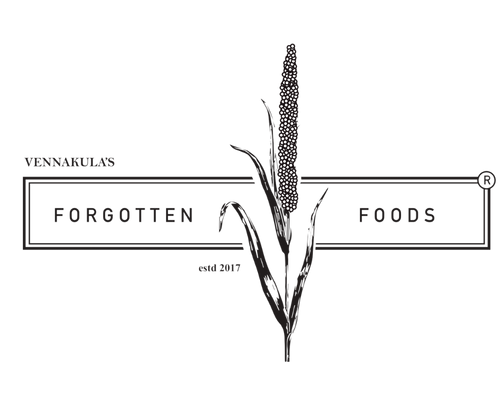Introduction
Rice has been a staple food for centuries, but not all rice is the same. In recent years, the debate between traditional rice varieties and hybrid rice has gained attention. While hybrid rice is developed for higher yields and disease resistance, native indigenous grains like traditional rice varieties hold immense nutritional, ecological, and cultural value. But which one is better? Let’s explore the differences between these two types of rice and find out why forgotten foods like traditional rice are making a comeback.
1. What Are Traditional Rice Varieties?
Traditional rice varieties, also known as landrace or heirloom rice, have been cultivated for centuries without genetic modification. These rice varieties are naturally adapted to their specific geographical regions and offer unique flavors, textures, and health benefits. Unlike modern hybrid rice, traditional rice is known for its rich genetic diversity and resilience.
Examples of Traditional Rice Varieties:
- Jeeraga Samba – A fragrant and fine-grained rice from Tamil Nadu, known for its use in biryanis.
- Kattuyanam – A flood-resistant variety rich in fiber, aiding digestion.
- Mappillai Samba – Also called "Bridegroom’s Rice," known for boosting stamina and strength.
- Thuyamalli – A nutrient-rich, easy-to-digest rice with a natural sweetness.
- Raktashali – A rare red rice variety from Kerala, revered in Ayurveda for its medicinal properties.
- Manipuri Black Rice (Chakhao) – A high-antioxidant, anthocyanin-rich rice known for its deep purple hue and nutty taste.
- Karuppu Kavuni - A variety of long grain black rice from Tamil Nadu.
- Tanga Samba from Tamil Nadu
- Rajamudi rice from southern Karnataka
2. What Is Hybrid Rice?
Hybrid rice is developed through crossbreeding different rice strains and sometimes genetic modification to enhance yield, pest and pesticide resistance, and faster growth cycles. Introduced in the mid-20th century to meet global food demands, hybrid rice has played a significant role in addressing food security but often at the cost of biodiversity, nutritional content, soil and human health.
Examples of Hybrid Rice Varieties:
- IR64 – A widely grown high-yielding variety developed by the International Rice Research Institute.
- Swarna Sub1 – A flood-tolerant hybrid variant of Swarna rice.
- PR 126 – A short-duration hybrid rice cultivated for quicker harvests.
- MTU 1010 (Cotton Dora Sannalu) – A popular high-yield hybrid rice variety from Andhra Pradesh.
- KRH-2 – A hybrid rice variety cultivated for increased productivity.
3. Nutritional Comparison: Traditional vs. Hybrid Rice
When it comes to nutrition and health benefits, traditional rice varieties are superior to hybrid rice. Unlike polished hybrid rice, native indigenous grains retain their bran, germ, and fiber, making them a healthier food choice.
| Feature | Traditional Rice Varieties | Hybrid Rice |
|---|---|---|
| Nutrient Content | High in fiber, vitamins, minerals, and antioxidants | Lower due to processing |
| Glycemic Index | Low to moderate (better for diabetics) | High (can cause sugar spikes) |
| Organic Cultivation | Easier to grow in organic way | Dependent on fertilizers, pesticides & chemicals |
| Processing | Minimal (unpolished/semi-polished) | Highly polished |
| Flavor & Aroma | Rich, distinct flavors | Often neutral |
4. Sustainability & Environmental Impact
One of the biggest advantages of forgotten foods like traditional rice varieties is their eco-friendly cultivation. Traditional rice is often grown using organic and sustainable farming methods, requiring fewer chemical fertilizers and pesticides. These varieties are also adapted to local climates, making them more resilient to extreme weather conditions.
On the other hand, hybrid rice production relies heavily on chemical fertilizers, pesticide inputs, irrigation, and monocropping, which can degrade soil health and reduce biodiversity over time.
5. Which One Should You Choose?
While hybrid rice provides higher yields and short-term economic benefits for farmers, the long-term benefits of traditional rice varieties cannot be ignored. Native grains offer better nutrition, taste, sustainability, and resilience, making them the ideal choice for those looking to adopt a healthier and more environmentally conscious diet.
If you’re looking for rice varieties that are rich in flavor, packed with nutrients, and grown through sustainable farming methods, traditional rice is the way to go. Support local farmers, preserve biodiversity, and enjoy the goodness of nature by incorporating these forgotten foods into your diet.
Conclusion
The debate between traditional rice varieties and hybrid rice ultimately comes down to nutrition, health, sustainability, and taste. While hybrid rice may cater to large-scale production, heirloom rice and native indigenous grains provide unmatched health, environmental benefits and preserve cultural heritage. Choosing traditional rice is a step towards a healthier lifestyle and a more sustainable planet.
Discover our range of traditional rice varieties at Forgotten Foods and embrace the richness of nature’s bounty today!
SHOP NOW





Comments (0)
Back to News